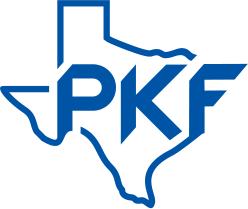Jen: This is the PKF Texas Entrepreneur’s Playbook. I’m Jen Lemanski and I’m back again with Frank Landreneau, one of our International Tax Directors. Frank, welcome back to The Playbook.
Frank: Thanks, Jen. It’s great to be back.
Jen: We were talking about FDII last time and that there have been a few changes. What do companies need to do to really maximize their opportunities if they choose to use this incentive?
Frank: As we covered last time, the IRS has given us this long-awaited guidance, early in March, and that provides the roadmap to really take advantage of the export incentive. The computation of figuring out what the tax break or deduction is, remember it’s a 37.5% deduction that gets your corporate earnings to be at about a 13% tax rate. What our listeners seem to understand is it’s very formulaic, and so some of the advantages are in how you derive the net income from export type of activities and the provision of export services. A lot of it is in the mechanics of allocated expenses, so if you have direct costs, obviously that would be allocated. There’s a wide range of options to allocate or portion indirect costs, so things that are mixed service costs, type of thing. There’s quite a bit of leeway on how you can do it. There are opportunities in that area as well as just different aspects of the mechanics of the calculation, but that being one of the biggest drivers is the cost allocation.
Jen: Ok, so if an entrepreneur is doing business as an LLC, can they still take advantage of this?
Frank: That’s actually one of the things we’ve talked about in previous sessions is that the tax reform really heavily favors US domestic corporations. As you know, a lot of entrepreneurs, businesses that you and I cater to do business as a pass-through entity, where the owners are the taxpayers and not the entity itself. That actually is an issue. This export incentive really is limited to domestic corporations. One of the things you may think about is there’s a lot of conversation about, should I convert my pass-through entity to a C corporation or a regular domestic corporation? And the answer is, not necessarily. I wouldn’t do that just for this. What I would do is set up something separate just for the export activity. But then the question becomes, what do you do with those earnings? You can do a lot of different things; global expansion; but it could be your vehicle to further invest overseas. It could be a holding company for, let’s say, foreign subsidiaries and finance international expansion.
Jen: Ok, now are there any other low hanging fruit opportunities, if you will, for companies that do want to take advantage of this?
Frank: You really kind of dig into the details. For example, a lot of people think, well if I sell, let’s say, to a customer that doesn’t necessarily—that’s a US customer, is that an export? Or, if the particular product has further manufacturing outside the US, is that an export, and different things like that. One of the things to look at is related party sales can qualify if that related party entity, that’s typically a foreign entity, sells it to a foreign end user. So, let’s say the customer, the end customer is a foreign customer, then those would qualify. And then you can always use things like transfer pricing to maximize that intercompany transaction to supercharge the FDII.
Jen: Yeah. Well, good. We’ll get you back to talk a little bit more about this in a future session.
Frank: As we learn more and dig through the details there will be a lot more to talk about.
Jen: Great. To learn more about other international topics, visit PKFTexas.com/InternationalDesk. This has been another Thought Leader Production, brought to you by PKF Texas – The Entrepreneur’s Playbook. Tune in next week for another chapter.

